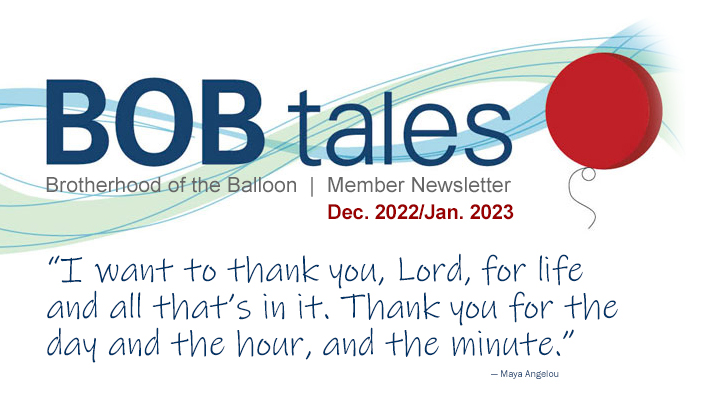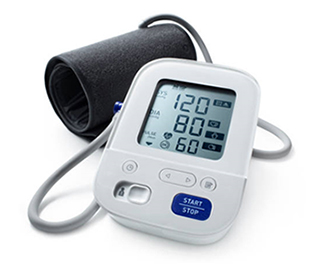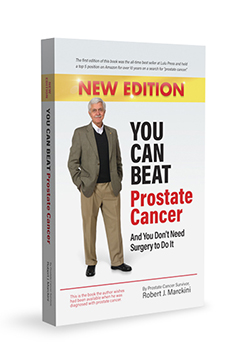
Dear Members (a note from Deb Hickey):
The holiday season is upon us. While I’m excited to celebrate with friends and visit with family (and eat), I always find myself reflecting on the past year.
Despite the fact that COVID-19 finally caught me; my car died (at 200,000 miles!); my dog was diagnosed with IBS; and a new medication I’m taking caused me to gain 10 pounds, the good has outweighed the bad.
My husband is still in remission from pancreatic cancer; I celebrated my 50th birthday with my loving family; I bought a newer car (I don’t even have to insert the key into the ignition to start it!); and for another year, I got to work alongside my dad helping to run this “ministry.”
I feel compelled to thank God for all that I have and to give back to the people and places that have contributed to my extraordinary life including the Pan-Mass Challenge for Dana Farber Cancer Institute, the Carroll School for Learning Difficulties, and of course, Loma Linda University Health. I also give to the ASPCA because I love all things dog.
I also want to express my heartfelt gratitude to all who’ve given back this year by making contributions to proton therapy research and the new theranostics program at Loma Linda University Cancer Center and those who’ve placed LLUH in their estate plans as my dad and I have done. Your generosity will impact the lives of thousands of men, women, and children.
In this issue of BOB Tales, we start with an important warning for those who may be thinking of signing up for or switching over to Medicare Advantage. Medicare Advantage is not the same as traditional Medicare, and while it may seem there are some “advantages” to this for-profit alternative, you could be losing important benefits.
This month, we also report on several studies linking alcohol to prostate cancer; we highlight new research that may reveal the origins of prostate cancer; and we write about two individuals who, thankfully, didn’t listen to their doctors whose recommendations were way off the mark.
In our Flashback story, we share one member’s experience with rising PSA and his doctor’s recommendation that could have been dangerous. In our Health section, you’ll learn which bodily function you probably take for granted in times of stress, and we tell you why measuring your blood pressure at home may be more accurate than having it taken at your doctor’s office.
As always, we love to get feedback on the newsletter and welcome any suggestions you have on how to improve the value of the BOB Tales to our members. Just send an email to [email protected].
Deb Hickey
To print the BOB Tales newsletter or view the newsletter with a larger font size, click here for the PDF file. .jpg)
.jpg)
In This Issue:
- Medicare Open Enrollment – Buyer Beware!
- Study May Reveal the Origins of Prostate Cancer
- What Do You Call the Medical Student Who Graduates Last in His Class?
- Stop PSA Testing After Age 70?
- The Link Between Alcohol and Prostate Cancer
- Three Successive Increases in PSA – And No Recurrence
- Breathing to Reduce Stress
- Monitor Blood Pressure at Home
Medicare Open Enrollment — Buyer Beware!
Remember the old saying …
“If it sounds too good to be true, it probably is.”
Nearly half the eligible Medicare beneficiaries are enrolled in Medicare Advantage plans, doubling over
the past five years, largely due to heavy marketing of Medicare Advantage. However, many seniors are regretting the decision they’ve made switching from government run Medicare to Medicare Advantage plans that are run by for-profit medical insurers. We’ve heard from several recently diagnosed men who were denied proton therapy for their prostate cancer because their Medicare Advantage plan wouldn’t pay for it. “Wait,” they say. “Medicare is supposed to pay for proton therapy ─ that’s what I’ve heard.” True, but government run Medicare and privately run Medicare Advantage are two different entities.
A Friend’s Story
We have friends with a disabled daughter. They switched her plan from Medicare to Medicare Advantage, believing they were adding new coverage such as vision, hearing, and dental insurance. They also thought they’d be saving money. Some of these things were true, but they weren’t aware of what they’d be losing, which was a lot. Several of their daughter’s doctors were no longer available to them. One of her expensive medications was no longer covered. And customer service support was “appalling,” they said. “Hold times on the phone were excessive – often 30 minutes or more – and when we did get through, we were talking with someone halfway around the world who we couldn’t understand.” At the next open enrollment period, they switched back to government run Medicare.
“Medicare Enrollees Warned about Deceptive Marketing Schemes”
That’s the title of an Associated Press article published on Nov. 6, 2022. The report points out that seniors are being sent mailers designed to look like official government forms, and that buses have signs that “scam pitches for Medicare websites.” Also, celebrities are often featured on TV commercials encouraging people to sign up for Medicare Advantage plans that may not include their current doctors.
Private Medicare Advantage insurers have ramped up their efforts to convert Medicare enrollees to their managed Advantage plans. “Competition for customers is fierce,” according to the AP article, with insurers relying on marketing agencies and brokers to help them “sell” their plans.
The Centers for Medicare and Medicaid Services (CMS) reported a significant increase in complaints around misleading Medicare Advantage ads last year, receiving 40,000, compared to 15,000 complaints in 2020.
An Increase in Complaints
Individual states are also reporting significant increases in complaints. In Ohio, for example, people are receiving mailers that resemble official tax forms that promise larger Social Security checks if they enrolled in a Medicare Advantage plan. One ad, which features a former NFL football player, fails to report “that plans vary by ZIP
code or that some providers will not be in network – meaning higher out-of-pocket costs for consumers …”
According to MedicareWire, some of the most common complaints about Medicare Advantage plans are:
- Hospitalization costs are higher
- Multiple co-pays are common
- You’re more likely to see a nurse practitioner than a doctor
- They often require referrals to see
certain care providers - Benefits, costs and providers can
change every year - High maximum out-of-pocket limits
MedicareWire concludes that,
There is no debate when it comes to which plan offers better coverage. Original Medicare and a supplement plan offer the best coverage, but it costs more up front.
Why is Medicare Advantage so heavily marketed?
It’s simple. The private insurers that manage Medicare Advantage are paid by Medicare whenever someone enrolls. The more people they enroll, the more money they make. However, after enrolling, you may find that certain medical procedures (like proton therapy), or certain doctors you were seeing, are no longer covered by your new insurance plan.
Not everyone who chooses Medicare Advantage regrets it.
While Medicare Advantage has limited provider (doctor and hospital) networks, there are many people who are happy with the doctors they can see and the new benefits they’ve acquired with their Medicare Advantage Plans, which often include prescription medicine, hearing, vision and dental coverage.
Summary
We certainly cannot cover all aspects of Medicare Advantage vs. government run Medicare in one article. Our intention is to alert our members to the fact that there are some important differences between the two and that aggressive marketing techniques can obscure some of the disadvantages of switching to the Medicare Advantage option. You should do your homework before changing plans, keeping in mind that Medicare Advantage Marketing ads and salespeople often don’t tell the entire story.
The good news is you can switch back-and-forth between the two plans during the open enrollment period, which runs from October 15 through December 7, every year. Coverage changes take effect the following January 1.
Study May Reveal the Origins of Prostate Cancer
According to new research published in Molecular Oncology, the prostate as a whole, including cells that appear normal, is different in men with prostate cancer from those without the disease. The findings suggest that prostate tissue in some men is primed and ready for cancer to develop and grow.
A team of UK researchers sought to better understand the causes of prostate cancer by studying the DNA code in tissue samples from men with and without the disease. In men with prostate cancer, they analyzed cancerous tissue as well as tissue from elsewhere in the prostate that appeared normal.
The researchers found that prostate cells that appeared normal in patients with cancer had more mutations (changes in the DNA) than prostate cells in men without cancer. According to the study’s lead investigator Prof. Daniel Brewer, from UEA’s Norwich Medical School, these normal-looking cells in patients with prostate cancer seem to provide a “beneficial environment” for cancer cells to develop, though the biological process is not understood.
“This work has improved our knowledge of how prostate cancer first starts to develop and might one day give us clues as to how to prevent or treat it,” said Brewer. “And it shows that it may be better to treat the whole prostate rather than only the areas in the prostate that have cancer.”
Dr. Hayley Luxton, Senior Research Impact Manager at Prostate Cancer UK, called the research “exciting” because we now know that cells that appear normal in men with prostate cancer actually contain specific genetic differences. “They act like a rich compost, providing the perfect environment for prostate cancer cells to grow and develop,” she said. “These findings give us important new insights into the early development of prostate cancer, which might one day give us clues to prevent it.”
What Do You Call the Medical Student Who Graduates Last in His Class? 
“Doctor.”
That’s a line from Bob Marckini’s book and an article in last month’s BOB Tales.
We think we came across one of these doctors recently.
A gentleman in his late 60s contacted us a few weeks ago to ask about his rising PSA. After reminding him that we’re not doctors and can’t give medical advice, we suggested he talk with his doctor about imaging tests that could help determine if a biopsy might be necessary.
The tests showed a couple of lesions, with PIRADS scores suggesting that clinically significant cancerwas likely present. A subsequent biopsy confirmed mid-stage prostate cancer that needed to be treated.
This gentleman was aware of the treatment options available as well as the benefits of proton therapy, whichhe learned would be covered by his Medicare insurance.
His urologist practiced in a medical center that didn’t have proton therapy capability. The gentleman sent us a copy of the urologist’s notes which shockingly read:
The patient asked me about proton beam radiation therapy, but I emphasized to him that with proton beam there will likely be worse side effects than IMRT and in addition, proton beam is likely inferior to IMRT with regard to curing prostate cancer.
We were flabbergasted by those comments, but there they were in black and white. We advised this gentleman to seek another opinion from a different doctor.
There has never been any question that proton therapy destroys cancer at least as well as IMRT, fundamentally because comparable levels of radiation are delivered to the tumor volume. And countless studies have shown that. Proton’s advantage lies in its ability to spare healthy tissue. This is an indisputable fact. Because of the Bragg Peak, almost all of the proton radiation goes to the tumor volume with minimal exposure to healthy tissue. This isn’t so with IMRT. Oncologists, physicists, and scientists all agree that the safest dose of radiation to healthy tissue is a zero dose. And proton therapy comes much closer to that goal than IMRT. This doctor should have known that.
The lesson here? Become your own advocate! Do your homework. Ask lots of questions. Push back if something doesn’t sound right. And above all, get a second or third opinion.
If we ever have an opportunity to talk with this doctor, we might suggest that we know 10,000 people from our group, and about 100,000 prostate cancer patients around the world who would disagree with him.
Stop PSA Testing After Age 70?
Here’s another story of a doctor who may not be acting in his patient’s best interest.
Since the United States Preventive Service Task Force (USPSTF) issued its guidance about 10 years ago to stop PSA testing, especially for older men, many doctors began following their suggestion. In the next few years, there was a surge in more advanced prostate cancer cases due to lack of routine screening. The USPSTF subsequently revised its guidelines. Nevertheless, some doctors continue to skip PSA screening and/or ignore PSA increases in older men.
We heard from one gentleman last month whose doctor is in that latter category. When his PSA increased to a level outside the normal range, the doctor advised him to ignore it. He didn’t ignore it. He bought a copy of Bob’s book; made an appointment with his urologist; and had a 3T-mp MRI, which showed suspicious lesions with PIRADS-4 ratings. This is clearly an indication of potentially clinically significant prostate cancer. The man was subsequently biopsied and moderately aggressive cancer was found. He’s scheduled to have proton therapy.
The Link Between Alcohol and Prostate Cancer
 According to the CDC, the less alcohol you drink the lower your risk for certain cancers. But studies about alcohol and prostate cancer have led to inconsistent conclusions.
According to the CDC, the less alcohol you drink the lower your risk for certain cancers. But studies about alcohol and prostate cancer have led to inconsistent conclusions.
A 2019 study in the Journal of Clinical Oncology found that men at risk for prostate cancer who drank alcohol had a reduced risk of “lethal” prostate cancer. They also found that among men with prostate cancer, those who drank 15-30 grams (1-2 “standard” alcoholic drinks) per day of alcohol actually had a lower risk of death than those who didn’t drink alcohol. While researchers acknowledged that additional research was needed, they suggested that light to moderate alcohol consumption may be safe for prostate cancer patients.
Other studies, however, have suggested that alcohol increases the risk of prostate cancer. A 2018 study, published in Cancer Prevention Research, found that among a cohort of 650 men receiving a prostate biopsy for either elevated PSA levels or an abnormal digital rectal exam, heavy alcohol consumption in their early lives was often linked to aggressive prostate cancer in adulthood. The study also found that higher cumulative lifetime alcohol consumption was associated with increased risk of high-grade disease.
A 2020 study found that hard liquor and red wine may raise the risk of prostate cancer. However, researchers didn’t find an association between prostate cancer and total alcohol consumption, but they concluded that consuming less alcohol is generally better for overall health.
The most recent study on this topic, published in March of this year, found the link between alcohol consumption and the development of prostate cancer to be strong.
The development of prostate cancer depends on many factors including diet, lifestyle, age, race, and family history. And researchers found the risk of prostate cancer associated with a pro-inflammatory diet (refined carbohydrates, sugar-sweetened beverages, red and processed meats, etc.) to be accelerated in low-to-moderate alcohol drinkers. In addition, they found alcohol intake was directly associated with prostate risk among individuals with low dietary fiber and folate intake.
Researchers also found that prostate cancer risk is positively associated with the amount of alcohol consumed as well as a history of binge drinking.
Researchers from the 2022 study suggest prostate cancer patients consider abstaining from drinking alcohol. They conclude that even at moderate levels of consumption, alcohol and its metabolites alone are enough to stimulate tumor growth and increase the metastatic potential of cancer cells.
We’ve been producing BOB Tales newsletters for more than 20 years. During this time there have been articles that many new members haven’t seen, and some older members may have forgotten. So, we periodically re-run articles from past newsletters. The following is from May 2007.
Three Successive Increases in PSA — And No Recurrence
Picture this: You finished your proton treatment and your PSA drops from the mid 5s to 1.8. This is good news. But six months later it bumps up slightly to 2.0. This isn’t a big worry; bumps are common. In another six months it’s 2.8. And two months after that it rises to 5.0. Now you’re concerned.
Your urologist concludes that your cancer has returned and recommends you start on androgen deprivation (hormone) therapy. What do you do?
One Member’s Experience
One of our members had this experience and he suggested to his urologist that he repeat the PSA test. The doctor disagreed and reiterated his recommendation to begin hormone therapy.
Not comfortable with his doctor’s advice, the man sought a second opinion from an oncologist who ordered another PSA test. The result was 1.8. One month later it was 1.7. That was 2 ½ years ago. Today his PSA is 0.3 and holding steady. It was a false alarm.
An Interesting Study
An article in the Journal of Urology 62:683-688, 2003 entitled, “Clinical Correlates to PSA Spikes and Positive Repeat Biopsies after Prostate Brachytherapy,” reports on a study conducted on several men who had brachytherapy (seeds) for their prostate cancer. Eight of the men in the study saw their PSA initially decline, and then turn around. Each experienced 3 to 5 successive increases in PSA, all within 30 months of treatment. Biopsies on every one of these men showed cancer in the prostate.
But here’s the interesting part: In all 8 cases, no action was taken; PSA turned around, began to decline, and settled down at nadirs of less than 1.0.
Here’s the conclusion reported in the study:
“Transient PSA rises can occur even in the presence of a persistently positive biopsy, and patients and physicians should not feel compelled to rush ahead with salvage therapy. On the basis of the patient data reported here, it appears that a spike up to 10 ng/ml is still consistent with cancer eradication.”
This is significant, as we believe it can apply to other forms of radiation therapy. So, what conclusions can we draw from this?
- PSA bumps – even multiple PSA bumps – don’t necessarily mean your treatment has failed. So don’t panic if you see one, two, or even three rises. But you shouldn’t ignore them either.
- Always seek a second or third professional medical opinion before embarking on a new course of treatment.
- According to Buckminster Fuller: “There are no straight lines in the universe.” Don’t try to predict your post treatment PSA pattern. It will be different for each one of us.

A Message from Bob Marckini
We charge no dues for membership in our group. Our members repeatedly tell us we provide considerable value to them through the various programs we’ve established over the years including our website (which we’re planning to redesign soon – stay tuned!), member testimonials, more than 50 former proton patient reference lists, medical insurance support and documentation, PowerPoint presentation, response to questions via emails and phone calls, and especially our comprehensive newsletters with timely information about new developments in prostate cancer prevention, detection, treatment, as well as the latest developments in proton therapy for treating prostate cancer and other diseases.
If you feel these efforts are valuable and you’d like to acknowledge them in some way, I hope you’ll consider two things:
- Making a year-end gift to the Loma Linda University Cancer Center
- Putting Loma Linda University Health in your estate plan
My wife and I, along with my daughter, Deb, make gifts every year and we’ve included Loma Linda University Health in our estate plans. This is our way of saying thank you for all we’ve received from our association with Loma Linda University Health.
Thank you.

Giving Options
Online
From the pull-down menu, choose where you'd like to direct your gift — 1) Proton Research through the James M. Slater Chair, 2) Proton Research through the Robert J. Marckini Chair, or 3) choose "Other" and specify where you'd like your gift directed in the space provided.
By Check
- Make your check out to "LLUCC."
- Specify where you'd like to direct your gift in the memo line — 1) Slater Chair, 2) Marckini Chair, 3) Theranostics, or 4) write "Unrestricted" so LLUH can use it where it's needed most.
- Mail your check to: LLUH, Office of Philanthropy P.O. Box 2000, Loma Linda, CA 92354.
By Phone
- Call Regina Joseph at 909-558-5010.
Breathing to Reduce Stress
 There’s no shortage of things to worry about these days – from inflation to national pandemics to political unrest to the stress of our own day-to-day lives. When you begin to feel anxious, psychologists say we may take for granted a scientifically proven destresser – our breath.
There’s no shortage of things to worry about these days – from inflation to national pandemics to political unrest to the stress of our own day-to-day lives. When you begin to feel anxious, psychologists say we may take for granted a scientifically proven destresser – our breath.
According Dr. Patricia Gerbarg, a professor at New York Medical College, if you change your breathing, you can change your emotions by altering signals that go to your brain. “The brain listens to the lungs, so the way that we breathe has a tremendous effect on how the brain functions for many different mechanisms,” said Gerbarg. “The messages from the respiratory system are very powerful and very rapid, and we think they have top priority.”
Studies have shown that controlling your breath can help manage stress and stress-related conditions. Slower breathing can also reduce anxiety and fear. In fact, carefully copying a relaxed breathing pattern may calm the nervous system thereby lowering blood pressure and heart rate and reducing levels of stress and hormones in the blood.
Here are three breathing exercises that can help you destress and relax.
Monitor Blood Pressure at Home
For many of us, the only time we have our blood pressure measured is when we have our annual physicals. But people are often anxious at the doctor’s office. “White Coat Hypertension” is quite common, resulting in higher than normal blood pressure readings. HealthDay News reports that blood pressure readings taken at home are more accurate for diagnosing high blood pressure than those taken at a doctor’s office.
So, how should I take my blood pressure at home?
Blood pressure monitors are inexpensive and easy to operate. Cost ranges from about $20 to upwards of $100 for a good quality monitor which can last for several years. Upper arm cuff monitors are considered to be the best. Wrist or finger monitors are generally not as reliable.
In their Fall 2022 HealthyTimes news bulletin, Blue Cross Blue Shield offers several tips for measuring blood pressure at home:
Before
- 30 minutes before: Don’t exercise, smoke or consume caffeine.
- 5 minutes before: Sit down and rest.
During
- Sit still and think calming thoughts. Don’t talk.
- Rest your arm comfortably on a flat surface. Position the bottom of the arm cuff directly above the bend of your elbow.
- Place your feet flat on the floor. Don’t cross your legs.
- Sit up straight with your back supported by the chair.
After
- Recheck your blood pressure one or two more times, about a minute apart
- Record all your results.
- Keep a chart of your results and take it with you when you meet with your doctor

 You Can Beat Prostate Cancer: And You Don’t Need Surgery to Do It – Second Edition
You Can Beat Prostate Cancer: And You Don’t Need Surgery to Do It – Second Edition
181 Amazon Reviews
As of this writing, there are 181 reviews on Amazon, almost all five-star, and the book is in the No. 2 position on a general search for “prostate cancer” as well as a search in the “books” category.
Following is a recent review:

A must-read for anyone with prostate cancer – super helpful info: After being diagnosed with prostate cancer in Sept 2021, I did lots of research finding options, especially to avoid surgery. Eventually I discovered proton therapy and with the help of Bob’s book, made the decision to go with that. His book helped a lot with my decision and knowing in advance what the treatment would be like. It also helped with overcoming any anxiety about the treatment and giving me lots of hope for a complete recovery like Bob’s. Thanks for writing this Bob!

The Personal Side
Last month we continued with our series of articles from the book, switching from the technical stuff to the personal side of Bob’s experience of treatment 22 years ago. In our November BOB Tales we covered Bob and Pauline’s arrival in Southern California and events leading up to Bob’s first treatment, including some of the humor.
We received lots of feedback from members who read the book and others who hadn’t read the book, all of whom said they truly enjoyed reading about the personal side of Bob’s treatment. The following excerpt from Chapter 9, My Treatment Begins, is a continuation from last month’s entry. Bob is in his pod, the infamous balloon was “in position,” and the radiation technicians were making final adjustments before starting the beam. Pauline’s emotions had gotten the better of her as she watched the radiation therapists’ actions in the “Star Wars” setting:
My Treatment Begins ─ Continued
With some comforting by the gentle and caring therapists, Pauline regained her composure, and she and the technicians moved behind a radiation barrier. Suddenly there was a short “zap” from the X-ray machine above me. The technicians then pressed a button and the huge gantry rotated 90 degrees. Back behind the barrier and another quick “zap.” These low-energy X-rays were taken from the top and the side to find pre-mapped points on my pelvic bone to ensure that I was in precisely the right spot before the high-energy proton radiation beam was introduced.
While the orthogonal X-rays were being analyzed by the computer, one of the technicians installed three more devices in the gantry machinery that were specifically designed and constructed, or selected for me: the energy modulator, the Cerrobend-lead alloy aperture and the jeweler’s wax bolus. These three devices, which help focus the proton beam precisely to the target volume, were bar coded and had to be scanned before the computers would allow the technicians to call for the proton beam.
The size and geometry of these devices were determined from the CT scan and resulting hologram made of my prostate. The purpose was to ensure that the proton beam was delivered to my prostate, the capsule surrounding my prostate, my seminal vesicles and an extra half-inch margin around the entire package. This is done to tolerances of about plus or minus a millimeter. Extraordinary technology!
Based on the information gathered by the two low-energy X-rays, the computer determined the final adjustment that needed to be made to my pod and platform, to place me in the proper position for the proton beam to do its work.
The technicians made this final adjustment and then called in the attending radiation oncologist to check all the settings. The doctor came in, checked the information on the computer screen and the position of the pod in the gantry, and gave his approval to call for the beam. This procedure, including the doctor’s final check, would be repeated 37 more times.
Next, I heard Tim Holmes, the lead technician, who looked more like a movie star than a radiation therapist, pick up the intercom and tell the accelerator control room, “Gantry 3 is ready for the beam” (Tim and his girlfriend, Andrea, would later become friends).
Tim told me that everything was ready, and that everyone needed to leave the room. “Does that include me?” I quipped. “No,” Tim chuckled, “You’ll have to stay here.”
Now I was alone in the gantry, and it was totally silent. I remember feeling instantly frightened – and inexplicably sad. Tears began to flow as I lay there helplessly in a custom-made pod, with a balloon in my butt, and surrounded by all this machinery. I
knew from the orientation tour that the technicians and my wife were in the Gantry 3 control room and were watching me on a TV monitor. I quickly regained my composure so I wouldn’t embarrass myself.
Three or four minutes went by and nothing happened. “What do I do now?” I thought. I began to pray. Then I thought about all the research I had done, all the books and articles I had read, the Internet searches, and the interviews. Yes, the interviews! I had spoken with 56 men who had chosen this treatment. “They all can’t be wrong,” I thought. The more I concentrated on the work I had done that led me to this place, the more I relaxed. I wiped away the tears, smiled, and thought, “Thank you, God.”
Suddenly the energy modulator wheel began to spin. The whirring sound was eerie, but befitting this “Star Wars” movie set I was in. I knew this meant the beam was coming next, and I found myself getting rigid, as if someone were about to punch me in the stomach. But I willed myself to relax. I didn’t want to do anything that might move my prostate even a fraction of an inch.
Then I heard the first beep, followed by another, and another – about one a second. This was the Geiger counter-type device that confirms the beam is being properly delivered. I remember counting the beeps to estimate the duration of the treatment. It was just about 60 seconds.
The beeping stopped, and the energy modulator whirring slowed and eventually stopped. I felt nothing – no pain, no discomfort, no burning sensation. It was over. My first treatment was completed. I felt energized; I felt relieved; I was happy; and I knew then
I had made the right choice.
Pauline and the Gantry 3 crew came back into the room and congratulated me – as if I had anything to do with what had just happened.
“OK. Mr. Marckini,” Tim said. “Party’s over – time to give us back the balloon. Please roll over on your left side.” I complied and he removed the balloon after draining the water into a small syringe-like reservoir.
I climbed out of the pod, thanked the radiation therapists, and walked back to the dressing room with Pauline. Once there, we hugged, and I said, “We made the right decision.”
Each day it was the same routine: Drink the water, climb into the pod, receive my balloon, and get zapped. Nothing to it! I was into the routine, and it was a piece of cake.
To be continued next month.

Did Bob's book help you?
If Bob’s book was helpful to you and you’d like to help others find it on Amazon, please write a review.
We’re happy to discount books in quantity to anyone who is interested in spreading the word on proton therapy. Just send an email to [email protected].
Proceeds from book sales are used to help fund our efforts and to support proton therapy research.

National Proton Conference
 The National Association for Proton Therapy (NAPT) is a non-profit organization founded to educate and increase public awareness about the clinical benefits of proton beam therapy. Founded in 1990, the NAPT advocates to ensure patient choice and access to affordable proton therapy and to encourage cooperative research and innovation to advance the appropriate and cost-effective use of proton therapy.
The National Association for Proton Therapy (NAPT) is a non-profit organization founded to educate and increase public awareness about the clinical benefits of proton beam therapy. Founded in 1990, the NAPT advocates to ensure patient choice and access to affordable proton therapy and to encourage cooperative research and innovation to advance the appropriate and cost-effective use of proton therapy.
Each Spring, NAPT holds an annual conference, the National Proton Conference (NPC), that brings together leaders in the field of particle therapy with a robust agenda focused on emerging clinical research, operational efficiencies, insurance authorizations, and in recent years a partnership with PTCOG-NA to present a special session.
Deb Hickey plans to attend NPC 2023 – “Elevating Access, Research, and Innovation in the Field of Particle Therapy” – in Salt Lake City, UT, May 6-9.


Last Month’s Brain Teaser
It takes a clock two seconds to strike 2 o’clock. How long will it take to strike 4 o’clock?
Hint: It may not be as obvious as it first appears.
Answer: It will take the clock six seconds to strike 4 o’clock. Why? Because there are two seconds between each strike: Two seconds between 1 and 2; two seconds between 2 and 3; and two seconds between 3 and 4.
Winner: The November brain teaser winner is a member who was treated in 2019 at California Protons Cancer Therapy Center in San Diego. Congratulations! Your signed copy of Bob’s book is in the mail.

New Brain Teaser
Here's another for our "lateral thinking" members:
Two men got lost while exploring in the desert. Each had a compass. One headed due East and the other headed due West. Two hours later they met. How come?
Send your brain teaser answer to [email protected] for a chance to win a signed copy of Bob Marckini’s NEW second edition book, You Can Beat Prostate Cancer.

Oops!
A man goes to the doctor with a badly swollen leg. After a careful examination, the doctor gives the man a white tablet large enough to choke a horse. “I’ll be right back with some water,” the doctor says.
The doctor is gone a while and the man loses patience. He hobbles out to the drinking fountain, forces the pill down his throat, and gobbles down water until the pill clears his throat. He hobbles back into the examining room.
The doctor comes back with a bucket of warm water. “Okay, after the tablet dissolves, soak that leg for at least 30 minutes.”

Growing Older
- I used to be able to do cartwheels. Now I tip over putting on my underwear.

- I hate it when I see an old person and then realize we went to high school together.
- I told my wife she should embrace her mistakes, so she hugged me.
- My wife says I have only two faults ─ one, that I don’t listen …and something else.
- I thought growing old would take longer.
- I won’t be impressed with technology until I can download food.
- I don’t mind getting older, but my body is having a fit.
- I told my wife I wanted to be cremated. She made an appointment for Tuesday.
- I’ve reached the age where my train of thought often leaves the station without me.
- If you’re happy and you know it, it’s your meds.
- I tried to explain to my 4-year-old grandson that it’s perfectly normal to accidentally poop your pants, but he’s still making fun of me.
- I always feel better when my doctor says something is “normal for my age,” but then I think dying will also be normal for my age at some point.


Car Keys and Home Security
 This tip came from a neighborhood watch coordinator. Put your car keys beside your bed at night. If you hear a noise outside your home or someone trying to get in your house just press the panic button for your car. The alarm will be set off, and the horn will continue to sound until either you turn it off or the car battery dies.
This tip came from a neighborhood watch coordinator. Put your car keys beside your bed at night. If you hear a noise outside your home or someone trying to get in your house just press the panic button for your car. The alarm will be set off, and the horn will continue to sound until either you turn it off or the car battery dies.
Next time you come home for the night and you start to put your keys away, think of this: It’s a security alarm system that you probably already have, and it requires no installation. Test it.
- It will go off from most everywhere inside your house and will keep honking until your battery runs down or until you reset it with the button on the key fob chain.
- It should work if you park in your driveway or garage.
- If your car alarm goes off when someone is trying to break in your house, odds are the intruder won’t stick around. After a few seconds all the neighbors will be looking out their windows to see who’s out there, and the criminal won’t want that.
- And remember to carry your keys while walking to your car in a parking lot, especially at night.

The Man Who Stuck His Head in a Particle Accelerator
A particle accelerator uses electromagnetic fields to propel charged particles, such as protons or electrons, at incredible speeds.
On July 13, 1978, 36-year-old physicist Anatoli Bugorski was working on the U-70 synchrotron at the Soviet Union’s Institute for High Energy Physics. At the time, the U-70 was the largest particle accelerator in the world (it’s still the most powerful accelerator in Russia).
Bugorski was inspecting a piece of equipment that had malfunctioned when the accident happened. Apparently, several safety mechanisms had also failed, so when he leaned over to investigate, a proton beam shot through the back of his head at close to the speed of light.
Sources seem to disagree on how much ionizing radiation Bugorski took to the head, but some say it was as high as 2,000-3,000 gray (200,000-300,000 rads). Nevertheless, the beam would’ve been strong enough to burn a hole through bone, skin, and brain tissue.
At first, Bugorski felt nothing. He knew what had happened and he knew how serious it could be, but he didn’t tell anyone. He just completed his day’s work and headed home to wait for the inevitable to happen.
During the night, Bugorski’s face began to swell “beyond recognition,” which prompted him to call his doctor first thing in the morning. He subsequently went to a clinic in Moscow where doctors didn’t expect him to survive.
Over the next few days, Bugorski’s skin peeled off around the entry and exit wounds and some say you could see a path where the beam had burned through his skull, but surprisingly, he survived. The left side of his face is paralyzed, he hears a constant “unpleasant noise” in his left ear, and he occasionally suffers from seizures, but otherwise Bugorski is okay. He went on to complete his Ph.D.


Drive Safely...
Jack took a long look at his speedometer before slowing down: 73 in a 55 zone. Fourth time in as many months. How could a guy get caught so often? When his car had slowed to 10 miles an hour, Jack pulled over, but only partially. Let the cop worry about the potential traffic hazard. Maybe some other car will tweak his backside with a mirror. The cop was stepping out of his car, the big pad in hand.
Bob? Bob from church? Jack sunk farther into his trench coat. This was worse than the coming ticket. A cop catching a guy from his own church. A guy who happened to be a little eager to get home after a long day at the office. A guy he was about to play golf with tomorrow. Jumping out of the car, he approached a man he saw every Sunday, a man he’d never seen in uniform. “Hi, Bob. Fancy meeting you like this.”
“Hello, Jack.” No smile.
“Guess you caught me. I’m in a rush to see my wife and kids.”
“Yeah, I guess.” Bob seemed uncertain. Good.
“I’ve seen some long days at the office lately. I’m afraid I bent the rules a bit ─ just this once.” Jack toed at a pebble on the pavement. “Diane said something about roast beef and potatoes tonight. Know what I mean?”
“I know what you mean. I also know that you have a reputation in our precinct.” Ouch. This was not going in the right direction. Time to change tactics. “What’d you clock me at?”
‘Seventy. Would you sit back in your car please?”
“Now wait a minute here, Bob. I checked as soon as I saw you. I was barely nudging 65.” The lie seemed to come easier with every ticket.
“Please, Jack, in the car.”
Flustered, Jack hunched himself through the still-open door. Slamming it shut, he stared at the dashboard. He was in no rush to open the window. The minutes ticked by. Bob scribbled away on the pad. Why hadn’t he asked for a driver’s license? Whatever the reason, it would be a month of Sundays before Jack ever sat near this cop again.
A tap on the door jerked Jack’s head to the left. There was Bob, a folded paper in hand. Jack rolled down the window a mere two inches, just enough room for Bob to pass him the slip. “Thanks.” Jack could not quite keep the sneer out of his voice.
Bob returned to his police car without a word. Jack watched his retreat in the mirror. Jack unfolded the sheet of paper. How much was this one going to cost? Wait a minute. What was this? Some kind of joke? Certainly not a ticket. Jack began to read:
Dear Jack,
Once upon a time I had a daughter. She was 6 when she was hit by a car. You guessed it ─ the driver was speeding. After receiving a fine and three months in jail, the man was free ─ free to hug his daughters, all three of them. I had only one, and I’m going to have to wait until Heaven before I can hug her again. A thousand times I’ve tried to forgive that man. A thousand times I thought I had. Maybe I did, but I need to do it again. Even now. Pray for me. And be careful, Jack, my son is all I have left.
Bob
Jack turned around in time to see Bob’s car pull away and head down the road. Jack watched until it disappeared. A full 15 minutes later, he pulled away and drove home slowly, praying for forgiveness and hugging a surprised wife and kids when he arrived.
Life is precious. Handle with care. This is an important message; please pass it along to your friends. Drive safely and carefully. Remember, cars are not the only things recalled by their maker.
We’d like to wish all our members a Merry Christmas, a Happy Hanukkah, and a holiday season filled with peace and joy. We hope the coming year will be overflowing with all the good things in life.
Low PSAs to all,
Bob Marckini and Deb Hickey
To print the BOB Tales newsletter or view the newsletter with a larger font size, click here for the PDF file.
NO MEDICAL ADVICE: Material appearing here represents opinions offered by non-medically-trained laypersons. Comments shown here should NEVER be interpreted as specific medical advice and must be used only as background information when consulting with a qualified medical professional.



